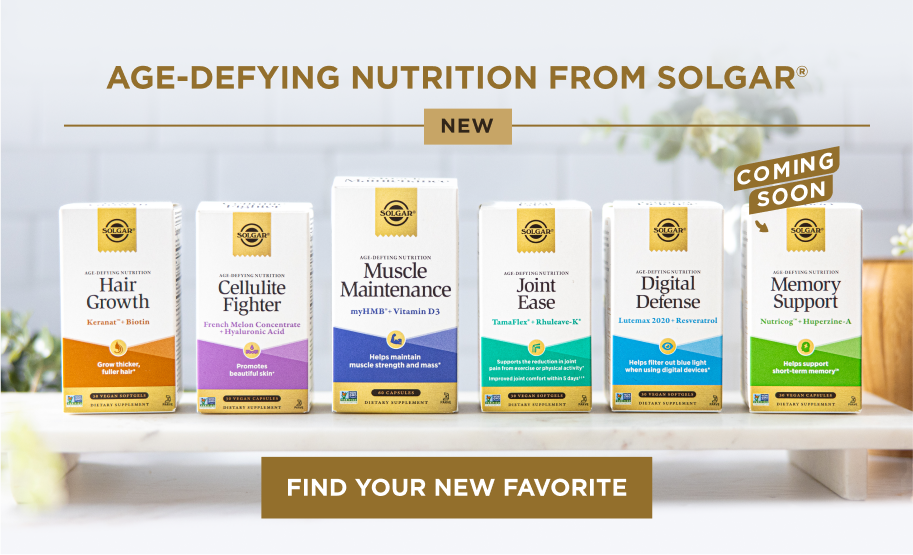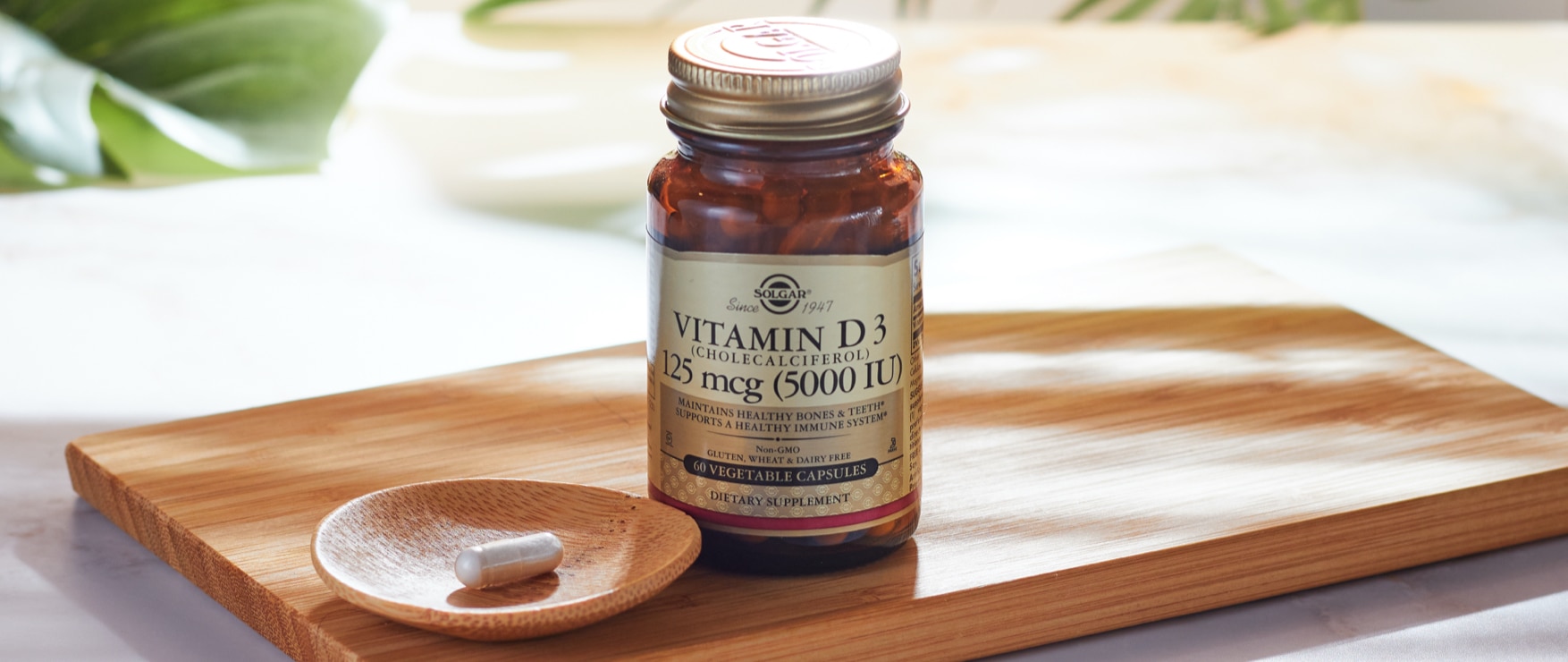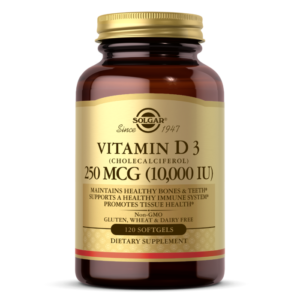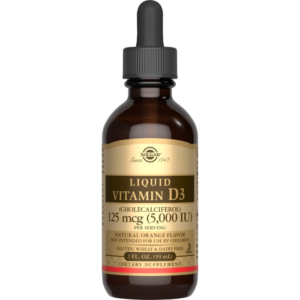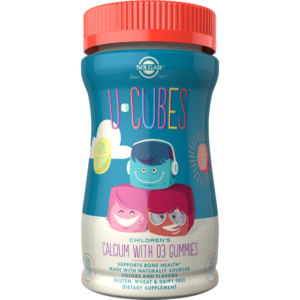Key Takeaways:
- The main source of vitamin D is sunlight, although it can be found in some foods such as oily fish, red meat, and egg yolks.
- Vitamin D helps keep bones healthy by increasing calcium absorption and helps support a healthy immune system.*
Vitamin D was discovered in 1920, ending the long search for a way to remedy rickets, a childhood bone disease. Since the discovery of vitamin D, rickets has become rare, and research has shown that vitamin D has many other benefits as well.1
Where does vitamin D come from?
Vitamin D is found in a small number of foods, including oily fish, red meat, and egg yolks.2 However, the sun is the body’s main source of vitamin D. The skin produces a natural form of vitamin D from a form of cholesterol, called 7-dehydrocholesterol. Sunlight is key: the UVB rays convert this cholesterol in the skin into a vitamin D3 precursor.
These initial forms of vitamin D3 then pass their way through the liver and the kidneys, where they are converted into a form of vitamin D that can be used by the body.3
Vitamin D, also known as calciferol or “the sunshine vitamin,” plays many important roles in the body. While it is found in a few foods, the sun is our main source of vitamin D.
The benefits of vitamin D
Vitamin D plays many important roles in the body. One of its best-known roles is to keep bones healthy by increasing calcium absorption. Calcium is less readily absorbed from the diet when vitamin D levels are suboptimal.
Vitamin D also helps to support a healthy immune system by regulating T and B immune cells.*4
Am I vitamin D deficient?
There are a number of different factors that can result in low vitamin D status or deficiency, with a lack of adequate sunlight being the main cause. As more of our time is spent indoors, people are becoming increasingly vitamin D deficient. People who spend most of their time inside, such as the elderly, or those who live in places with longer winters are at a greater risk of vitamin D deficiency. Because pigmentation can reduce vitamin D production in the skin from sunlight, those with darker skin are at higher risk for vitamin D deficiency.5
According to the CDC, 8% of the US population is at risk for vitamin D deficiency.6 If you think you may be vitamin D deficient, be sure to consult your healthcare provider to help determine the best plan of action.
How much vitamin D do I need?
Although individual vitamin D requirements may vary from person to person, the National Institute of Health has developed dietary reference intakes as a guideline.
| Age | Male | Female | Pregnancy & Lactation |
| 0–12 months* | 10mcg (400 IU) |
10mcg (400 IU) |
|
| 1–13 years | 15mcg (600 IU) |
15mcg (600 IU) |
|
| 14–18 years | 15mcg (600 IU) |
15mcg (600 IU) |
15mcg (600 IU) |
| 19–50 years | 15mcg (600 IU) |
15mcg (600 IU) |
15mcg (600 IU) |
| 51–70 years | 15mcg (600 IU) |
15mcg (600 IU) |
|
| >70 years | 20mcg (800 IU) |
20mcg (800 IU) |
*Adequate Intake (AI)
*Source https://ods.od.nih.gov/factsheets/VitaminD-HealthProfessional
GET THE LATEST UPDATES AND EXCLUSIVE DEALS WHEN YOU SIGN UP FOR OUR NEWSLETTER!
Vitamin D supplements
People who don’t get enough vitamin D from the sun often benefit from taking a vitamin D supplement. While there are some foods that contain vitamin D, they often need to be eaten in great quantities in order to get enough.
Let’s check out some of our favorite vitamin D supplements:
SolgarⓇ Vitamin D3 Softgels: The vitamin D3 in this product is the same form produced by our body when exposed to sunlight. Vitamin D is one of four fat-soluble vitamins, which is why this formula provides vitamin D3 in oil-based softgels to promote optimal absorption.
SolgarⓇ Liquid Vitamin D3: The perfect form of vitamin D3 for anyone who doesn’t like swallowing capsules. Available in a delicious orange flavor, simply add the required amount to any liquid for an added drop of sunshine.
SolgarⓇ U-CubesTM Children’s Calcium with D3 Gummies: Vitamin D is crucial in children’s bone development.* Each serving of tapioca-based U-Cubes™ Calcium with D3 provides the pediatrician-recommended dosage of Vitamin D37 per 4 gummies, which offers 75% of the Daily Value for children 4 years and older. These non-GMO gummies are crafted in small batches to ensure the highest quality.
To stay up to date on the latest Solgar products and information in health and wellness, don’t forget to follow us on Instagram! (@solgar)
6 U.S. Centers for Disease Control and Prevention. Second National Report on Biochemical Indicators of Diet and Nutrition in the U.S. Population 2012. Atlanta (GA): National Center for Environmental Health; April 2012.
7 The American Academy of Pediatrics recommends children and adolescents receive 15 mcg [600 IU] of Vitamin D per day. These gummies provide 15 mcg [600 IU] per 4 gummies for children 4 and up and 7.5 mcg [300 IU] per 2 gummies for children 2 to 3.
*These statements have not been evaluated by the Food and Drug Administration. These products are not intended to diagnose, treat, cure or prevent any disease.
The information provided on this site is intended for your general knowledge only and is not a substitute for professional medical advice or treatment for specific medical conditions. Always seek the advice of your physician or other qualified healthcare provider with any questions you may have regarding a medical condition. The information on this website is not intended to diagnose, treat, cure, or prevent any disease. Never disregard medical advice or delay in seeking it because of something you have read on the Solgar® site.

